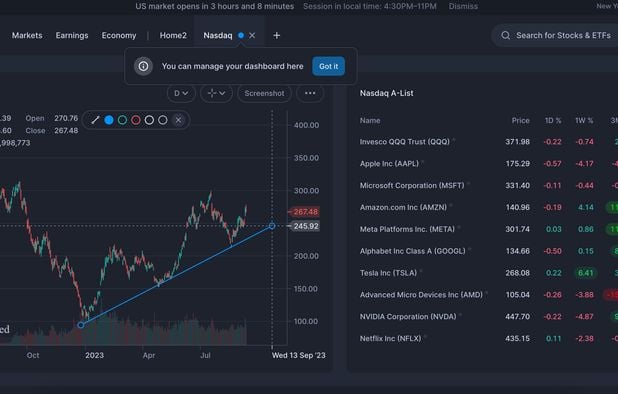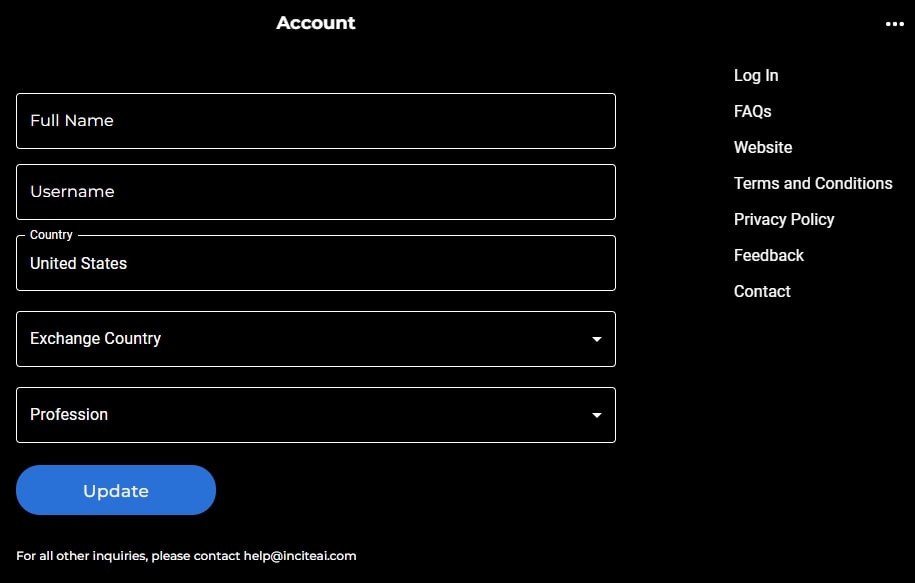20 Great Suggestions For Selecting AI Stock Trading Platform Websites
20 Great Suggestions For Selecting AI Stock Trading Platform Websites
Blog Article
Top 10 Tips To Evaluate The Ai And Machine Learning Models Of Ai Platform For Analyzing And Predicting Trading Stocks
To ensure accurate, reliable, useful insights, it is vital to evaluate the AI and machine-learning (ML), models used by trading and prediction platforms. Models that are poorly constructed or overhyped could result in inaccurate forecasts and financial losses. Here are the top 10 tips for evaluating the AI/ML models on these platforms:
1. Know the Model's purpose and Method of Approach
Clarity of purpose: Determine if this model is intended for short-term trading or long-term investment, risk analysis, sentiment analysis, etc.
Algorithm disclosure: Find out whether the platform is transparent about the algorithms it uses (e.g. neural networks or reinforcement learning).
Customization - See if you can tailor the model to suit your investment strategy and risk tolerance.
2. Evaluation of Performance Metrics for Models
Accuracy. Check out the model's ability to forecast, but do not depend on it solely because it could be false.
Accuracy and recall: Examine whether the model is able to identify real positives (e.g., correctly predicted price moves) and reduces false positives.
Risk-adjusted returns: See the model's predictions if they yield profitable trades taking risk into consideration (e.g. Sharpe or Sortino ratio).
3. Test the model by Backtesting
Backtesting the model by using previous data lets you test its performance against prior market conditions.
Examine the model using information that it hasn't been taught on. This will help prevent overfitting.
Analyzing scenarios: Evaluate the model's performance during various market conditions (e.g., bull markets, bear markets high volatility).
4. Be sure to check for any overfitting
Signs of overfitting: Search for models that have been overfitted. These are models that do extremely well on training data and less well on unobserved data.
Regularization: Check whether the platform is using regularization methods such as L1/L2 and dropouts to prevent excessive fitting.
Cross-validation is essential for any platform to use cross-validation when assessing the generalizability of the model.
5. Examine Feature Engineering
Relevant features: Check whether the model is using important features (e.g. volume, price technical indicators, sentiment data, macroeconomic factors).
Selecting features: Ensure that the platform chooses features that are statistically significant. Also, eliminate irrelevant or redundant information.
Updates of dynamic features: Verify that your model is up-to-date to reflect the latest features and market conditions.
6. Evaluate Model Explainability
Interpretation: Make sure the model has clear explanations of the model's predictions (e.g. SHAP values, the importance of features).
Black-box platforms: Be wary of platforms that utilize too complex models (e.g. neural networks deep) without explainability tools.
User-friendly insights : Determine if the platform offers actionable data in a form that traders can understand.
7. Test the ability to adapt your model
Changes in the market. Check if the model can adapt to changes in the market (e.g. the introduction of a new regulation, a shift in the economy or a black swan phenomenon).
Continuous learning: Find out whether the platform continually updates the model to incorporate new data. This can boost performance.
Feedback loops - Ensure that the platform integrates real-world feedback as well as user feedback to enhance the model.
8. Examine for Bias and fairness
Data bias: Ensure that the training data is accurate to the market and is free of biases (e.g. excessive representation of particular areas or time frames).
Model bias - Determine the platform you use actively monitors, and minimizes, biases within the model's predictions.
Fairness - Ensure that the model you choose to use isn't biased in favor of or against certain stocks or sectors.
9. Examine Computational Efficiency
Speed: Find out the speed of your model. to produce predictions in real-time or with minimal delay particularly for high-frequency trading.
Scalability Verify the platform's ability to handle large data sets and multiple users without performance degradation.
Resource usage: Make sure that the model is optimized to make the most efficient use of computational resources (e.g. the use of GPUs and TPUs).
10. Review Transparency and Accountability
Model documentation - Ensure that the model's documentation is complete information about the model, including its structure, training processes, and limitations.
Third-party validation: Determine if the model was independently validated or audited a third person.
Error handling: Examine for yourself if your software has mechanisms for detecting and fixing model errors.
Bonus Tips
Reviews of users and Case studies: Review user feedback, and case studies to evaluate the actual performance.
Trial period: You can use an unpaid trial or demo to evaluate the model's predictions as well as its usability.
Customer Support: Verify that the platform has solid technical or model-specific support.
Use these guidelines to evaluate AI and ML models for stock prediction to ensure that they are accurate and transparent, as well as compatible with trading goals. Have a look at the most popular investing ai blog for website examples including ai stock, ai stocks, ai chart analysis, ai investment app, best ai stock trading bot free, using ai to trade stocks, ai trade, ai stock trading app, trading with ai, ai stocks and more.
Top 10 Suggestions For Looking At The Scalability Ai Trading Platforms
Analyzing the scalability of AI-driven trading and stock prediction platforms is vital to ensure they can cope with increasing data volumes, user demands and market complexity. Here are the top 10 tips to determine the scalability.
1. Evaluate Data Handling Capacity
Check to see if your platform can analyze and process large data sets.
The reason: A scalable platform should be capable of handling the ever-growing data volume without performance degradation.
2. Test Real-Time Processing Ability
Tips: Make sure you check the ability of the platform to process live information streams, such live stock prices, or breaking news.
The reason: Analyzing in real-time is crucial to make trading decisions. delays could result in missing opportunities.
3. Check Cloud Infrastructure and Elasticity
Tip - Determine if a platform uses cloud infrastructure, e.g. AWS or Google Cloud.
Cloud platforms are able to allow for elasticity. The system is able to scale up or back down depending on the demands.
4. Algorithm Efficiency
Tip 1: Evaluate the computational efficiency for the AI models that are being utilized (e.g. reinforcement learning, deep learning, etc.).
The reason is that complex algorithms can be resource-intensive. Optimizing them so that they make them scalable is important.
5. Learn more about Parallel Processing and Distributed Computer Systems.
TIP: Make sure to check that the platform supports parallel processing frameworks or distributed computing frameworks.
What are they: These technologies speed up the processing of data and allow for analysis across multiple nodes.
Examine API Integration, and Interoperability
Tip: Check the integration of the platform with external APIs.
Why: Seamless integration ensures the platform can adapt to new information sources and environments for trading.
7. Analyze User Load Handling
Make use of a high-traffic simulation in order to check how the platform reacts under pressure.
The reason: A platform that is scalable should maintain performance even as the amount of users increase.
8. Examine the Model Retraining and Adaptability
TIP: Assess how frequently and efficiently AI models are being trained with the help of new data.
Why: Because markets are always changing It is crucial to update models regularly.
9. Check Fault Tolerance (Fault Tolerance) and Redundancy
Tip: Ensure the platform has failover mechanism and redundancy to handle hardware or software issues.
The reason: Downtime is expensive for traders, and fault tolerance is essential to ensure scalability.
10. Monitor Cost Efficiency
Analyze your platform's cost which includes cloud's storage, cloud resources and computation power.
Why: The price of scalability should not be unsustainable. Thus, it's essential to balance performance and expense.
Bonus tip Future-proofing
Platforms should be designed to incorporate new technologies, such as quantum computing as well as advanced NLP. They must also adjust to regulatory changes.
These factors can help you assess the potential of AI-powered stock prediction and trade platforms. They'll also make sure that they are robust, efficient, ready for expansion, and future-proof. Read the most popular best ai trading platform for site advice including invest ai, stock trading ai, best ai trading platform, best ai stocks, ai stock analysis, ai stock trader, chart analysis ai, free ai stock picker, ai stock predictions, ai stock price prediction and more.